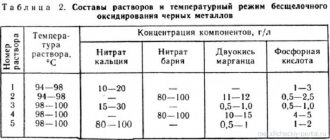By using a neodymium magnet, you can reduce your utility bills to a reasonable cost. But after it, magnetization remains, which is why the meter may malfunction, and this can also lead to the fact that metering has stopped being detected during verification.
Therefore, many people ask a logical question - how to demagnetize the counter after the magnet. This information will be useful to anyone who is interested in how to stop the meter for water, gas, electricity, etc. The need for demagnetization may also arise due to the dishonesty of tenants. Therefore, the owner of a house or apartment needs to know what methods can be used to eliminate the magnetization of the device.
In our online store you can buy a gas meter with a magnet .
When is it necessary to demagnetize the meter?
Magnetization of a device can be intentional or accidental:
- Intentional occurs when the user stops taking readings.
- Random magnetization occurs naturally when there is an object with a strong magnetic field near the meter.
Let's look at how to demagnetize an electric meter after using a neodymium magnet. The procedure is needed in the following cases:
- If it is necessary to start the counter after the magnet to restore the factory operating mode. Such forethought will help to avoid unpleasant situations during the next visit of the inspector to carry out a scheduled inspection.
- If verification is planned. It is important that the influence of an extraneous magnetic field goes unnoticed. You also need to get rid of residual magnetization.
It is advisable to know in advance about the possibilities of using a magnetic field and the consequences of improper use. This will prevent the occurrence of an unpleasant situation when an individual metering device (IMU) does not work after an external magnetic influence.
Possible consequences
Before resorting to using a neodymium magnet, it is necessary to find out the degree of protection of the metering device. Among other measures, utility organizations use special magnetic seals that change the color indication as a result of exposure to a magnet.
A meter with such seals will inevitably react to illegal interference in its operation. As a result, the consumer will have to face serious sanctions, including a fine of up to 30,000 rubles. Additionally, you will have to pay the difference in the amount calculated according to the standards for the entire period of operation of the water meter from the moment of the last inspection.
If the damage caused is large, criminal measures may be applied to the violator, providing, in addition to serious fines, correctional labor or imprisonment.
You should think seriously before turning to dubious methods of saving. Moreover, influencing the meter with a magnet will not always bring the desired result. But with a high degree of probability, such interference in the operation of the device will inevitably be revealed during verification, which threatens the owner with serious material losses that do not justify the scale of savings achieved.
Source
Why does the counter after the magnet not spin or not work at all?
Now let’s figure out what to do if, after magnetization, the metering device stops spinning. Let's start with the fact that it depends on many reasons. Failure often occurs due to unsuitable magnet parameters or due to the influence of the characteristics of the IPU.
Since the times of the USSR, metering devices could be easily stopped using a magnetic field. First of all, this was due to the special designs of Soviet models of accounting devices. These devices were of the induction type; their circuit included movable metal parts. The rotation of the moving element was transmitted to the counting mechanism through a built-in magnet. It was poorly shielded and therefore easily exposed to external magnetic influences.
The reasons for the breakdown may be the following:
- With old IPUs, a situation often arises when, after a magnet, the hot water meter stops spinning or, conversely, spins faster. This also applies to all other types of accounting devices. This happens if the magnet parameters are chosen incorrectly or if it is too powerful. The moving element - the impeller - can jam, and then the meter does not turn.
- If the magnet was too powerful and the device stopped, this may mean that the parts inside the case have become completely demagnetized. The device cannot be repaired and must be replaced.
- If the meter twitches, most likely the demagnetization was incomplete. Then magnetization of the device body becomes a separate problem.
Expert opinion
Vasily Krivoruchko
Master electrician
Modern IPUs do not contain moving metal elements, so it is impossible to stop or slow down their operation in the old way.
Safe use is possible only after modification of the device or when using a completely different stopping method that is not associated with a magnetic field. For an electric meter, this could be, for example, a pulse generator that blocks metering by sending signals to the IPU microprocessor. From us you can buy a pulse device for stopping the electric meter for single-phase and three-phase networks.
Degaussing device
#1 OFFLINE YUHA
Experienced pilot
7,124 messages
The topic was inspired by watching a video where a guy spent half an hour demagnetizing a copter’s compass using a permanent magnet.
A bit of an amateurish theory: metal objects are demagnetized in an ALTERNATING DECREASING magnetic field.
It’s easier to do this with the help of some unnecessary network transformer (power supply to the primary winding from a 220 Volt network). I used a transformer from an Elf reel-to-reel audio recorder.
We remove the clip, take out the core, assembled across the roof from W-shaped plates and closing plates. The bottom line is this: you need to “open” the magnetic gap, ensuring the radiation of magnetic energy into space. We insert the W-shaped plates into the coil, but we don’t need simple ones. Naturally, the device will respond to such an upgrade with a very loud noise and increased heating. We remove it by tightening the core. You can wrap it tightly with electrical tape. We neglect increased heating - we need a few seconds for the process.
So, the process itself:
1. The aircraft must be turned off. (Remove battery)
2. Before turning on, we place the demagnetization device at a distance of a meter and a half from the copter. Depends on power. For low-power transformers, ten centimeters are enough. I have a 40 Watt transformer - a meter distance before turning it on.
3. Turn on the device and, using circular movements, bring it closer to the demagnetization point - the compass. No need to touch. It is enough to bring it a few steps closer. see. We also move the device away to the original distance using circular movements.
The whole procedure should take 5-10 seconds. It doesn't make sense any longer.
Warning: if during the demagnetization process the power in the demagnetizer is accidentally lost, the effect will be the opposite - we will magnetize the compass. It's okay - we carry out the procedure again.
Honestly: I don’t see any reason to magnetize the compass. Obviously, this can happen after flying over powerful power grids or (oddly enough) after simply standing the copter next to pipes through which water flows.
#2 OFFLINE APV
Experienced pilot
Practical and very correct and competent advice! Once upon a time I used this method to demagnetize clock screwdrivers and the grids of ray tubes (picture tubes) of color TVs. By the way, many people probably magnetize the compass with magnetic screwdrivers, some transporting it in the trunk of a car where powerful speakers are built-in.
#3 OFFLINE YUHA
Experienced pilot
7,124 messages
Oops! I forgot about “. transporting in the trunk of a car, where powerful speakers are built in.” – suffered from disco crap as a child
Stopudovo – the magnetization option is possible.
Gentlemen! Just don’t try to demagnetize the compass with a permanent magnet. The result will most likely be the opposite!
But here there is a double interpretation: Sometimes it is necessary for the bolt to be held on the tip of the screwdriver. We simply magnetize: bring a screwdriver to the demagnetizer and turn it on briefly. Of course, it all depends on the properties of the steel of the screwdriver.
#4 OFFLINE Snortwild
Users 3 posts
Here are the instructions in the assistant.
Typically, there is no need to calibrate the IMU by the user. If the LED flashes green quickly when stationary on the ground, please try Basic or Advanced. calibration by sensor Mod.
- The gyro 'Mod' value is usually in , if it is in the interval , great. If it exceeds 3.0, pre-calibration is necessary.
- The amplifier 'Mod' value is usually , if it is on the interval or , excellent. If it is less or more than 0.97 1.03, accurate calibration is necessary.
The compass (raw) shows the raw magnetic vector data, and the normal range is -500 +500. The 'Mod' shows the calibrated magnetic vector modulus data, and it can be used to check the calibration effect. If the 'Mod' value is below 750 or beyond 2250, you should check whether there is magnetic interaction or not. If yes, clean them and reconfigure them. If not, and the 'Mod' value is still outside the normal range after calibration, try using a magnet ( 0
How long does magnetization last on the meter?
In the environment of an external magnetic field, magnetization of the IPU structure occurs. For safe use, it is important to understand how long the magnetization lasts on the water, electricity, gas or heat meter.
The magnetic field soon disappears - immediately after the magnet is removed. It is impossible to calculate how long magnetization lasts unless you become familiar with the parameters of the magnetic effect, as well as the operating conditions of the IPU. In practice, independent demagnetization of the IPU takes from one day to several weeks.
Vladimirs Vorohobovs
Many irresponsible residents take advantage of this. installing magnets near their meters and thus stealing water.. However, now there is an inexpensive seal that can be put on an already installed water or gas meter. Like a regular seal, it has its own unique number or letter code, which can be recorded in a journal and thereby verify that the seal has not been replaced. Installing such a seal on a meter does not require complex skills.
I didn’t find a single loss, I also found a court - a fine against them for tax evasion.
In general, to give more information against scammers:
1) We meet with them at the office to make a claim (in my case, I didn’t even find an office - at the specified address there is a nine-story residential building). There are no workers. The manager, a 24-year-old boy, refused to meet with me at a time convenient for him - he sent a written complaint about poor-quality measurements. I refused to pay the cost of measurements - 350 rubles for each meter (I have 4 of them and they all showed the same value, like other cases - very interesting, isn’t it? Do they have a scale with one value?) , because does not want to take repeated measurements in my presence and provide the documents required by law.
Can the meter demagnetize on its own?
After the external field is eliminated, the meter retains residual magnetization, which is unstable and gradually disappears. How long it takes for a magnetized meter to demagnetize depends on the following reasons:
- From the materials from which the device is made. Some materials are ferromagnets, which stabilize and retain magnetization for a long time even without an external magnetic field.
- How long the magnetization lasts also depends on the temperature of the IPU. The higher the temperature of a ferromagnet, the faster it loses its magnetic properties.
Complete demagnetization is possible when heated above the set temperature. But at home this is impossible, since for iron-based alloys the temperature is 700-800°C. Strong heating will lead not only to demagnetization of the metering device, but also to its damage.
What are the legal consequences of violating the operation of water meters with magnets and the penalties?
If during verification of the meter a magnet (or any other magnetic device) was discovered that could affect the meter readings, then the inspector will record an administrative offense and draw up a protocol for causing property damage. In this case, you will have to pay the amount that should have been credited to the account for the entire time that the owner used this device.
To find out the specific amount of the fine, the following happens:
- The inspection body establishes the exact or approximate date when the magnet was installed. This is done by checking the latest reconciliation of the inspection body.
- If it is not possible to determine the date of use of the magnet, then the average rate of water consumption is taken as a basis, multiplied by 10 and by 3 years, if the inspector did not come earlier. Thus, the final amount of the fine is obtained.
If you refuse to pay the fine, then a more stringent article may be applied, and the fine itself will still be collected in the end, but in court with even more severe consequences.
How to check the magnetization of the IPU
After stopping the magnet, it is necessary to check whether the metering device is magnetized.
You can check how long the magnetization of a water, gas or electricity meter is maintained using a small needle. If, after the cessation of external influence, it sticks to the body, it means that it is magnetized. The second check is carried out after a day or two, in most cases the needle will not stick. A demagnetized meter for water, gas and other consumed resources allows you to hide traces of extraneous influence.
You can also determine the effect of a magnet on the meter using a compass. If the compass needle brought to the body remains motionless, this means that the device is completely demagnetized. At the slightest magnetization, the needle does not stand still, but actively moves.
The presence of residual magnetization is also determined by the Teslameter. This is a more reliable method, which is often used by regulatory organizations. The measurement is made on the surface of the object or at a specified distance from it. When measuring, the permissible residual level of magnetic intensity is set. The unit of measurement is the tesla (amps per cubic meter).
Expert opinion
Victor Fedorovich
Metrology engineer
Note! If the meter is checked for magnetization by specialists, it can detect any actions of the owners regarding changes in readings. When an inspector checks a meter using a Teslameter, any deviations in the operation of the meter immediately become obvious.
The power of magnetic elements in different models is not standardized, and magnetization standards for different models and manufacturers differ significantly. Since the issue is not regulated by law, and there are no norms of any kind, the excess magnetization of the IPU is a rather controversial issue.
How to demagnetize a counter after a magnet with your own hands at home
Owners who have chosen a magnet to control an accounting device need to understand how to make a demagnetizer with their own hands for a water, heat, light or gas meter.
To demagnetize a meter after magnetization with your own hands, several methods are used that actually work.
Do-it-yourself degausser for meters
If you need to get rid of magnetization in a water, gas, electricity meter, etc., a demagnetizer will come to the rescue. In the era of cassette recorders, this device served to demagnetize the head.
Craftsmen use it to demagnetize plumbing tools (screwdrivers, tweezers, keys). This device helps reduce the magnetic field strength to almost zero.
Purely technically, a demagnetizer is a coil with a wire, without a core, powered by a home electrical network, with 220 V. To demagnetize a gas, water or electric meter after a magnet at home, it is enough to gently bring the demagnetizer from the IPU for two to three minutes and just as smoothly remove the demagnetizer from the IPU.
An owner with knowledge of the basics of electrical engineering can easily assemble a degausser for a water, gas and other resource meter with his own hands. The basis of the circuit is a solenoid, in other words, an inductor. It consists of a cylindrical base and a wire wound on it (a total of 1000 turns are needed). It is possible to use two types of copper wrapped wires with a cross section of 0.7-0.9 mm:
- PEL. Wire with enamel varnish-resistant coating.
- PEV. Wire with high-strength enamel coating, the most common.
Industrial demagnetizers for meters
The fundamental design of industrial demagnetizers does not differ from home-made analogues. Using a demagnetizer for water, electricity, heat or gas meters is practically no different. To demagnetize the IPU after the magnet, two to three minutes of operation of the industrial device is enough.
The use of a shop assembly demagnetizer has the following advantages:
- Diversity. The production of models of various types and powers with a range from 40 to 120 V has been established. Continuous operation reaches 2-3 minutes.
- Convenience. It is portable in size and looks neat.
- Quality. Production assembly ensures stable performance and high-quality results.
It will be much easier to remove magnetization from a water meter using an industrial unit rather than a homemade one. The only negative is their cost. Relatively budget portable models cost from 25 to 35 thousand rubles, and this is their minimum price.
It will be easier and cheaper to use another accounting blocking method. For example, from us you can buy an electricity meter with a remote shutdown control. You can see how it works below:
Using neodymium magnet
Neodymium magnets have been widely used in recent years as a means of stopping or slowing down the operation of a meter. The production of these products is established by numerous companies offering these products to clients.
The magnet is selected depending on the brand of the installed meter, but it is impossible to guarantee the effectiveness of the result, since the developers of metering devices use all kinds of methods of protection against unauthorized influence.
In most cases, the use of a neodymium magnet reduces the flow rate of the water meter by up to 70%, which provides decent savings on payments.











